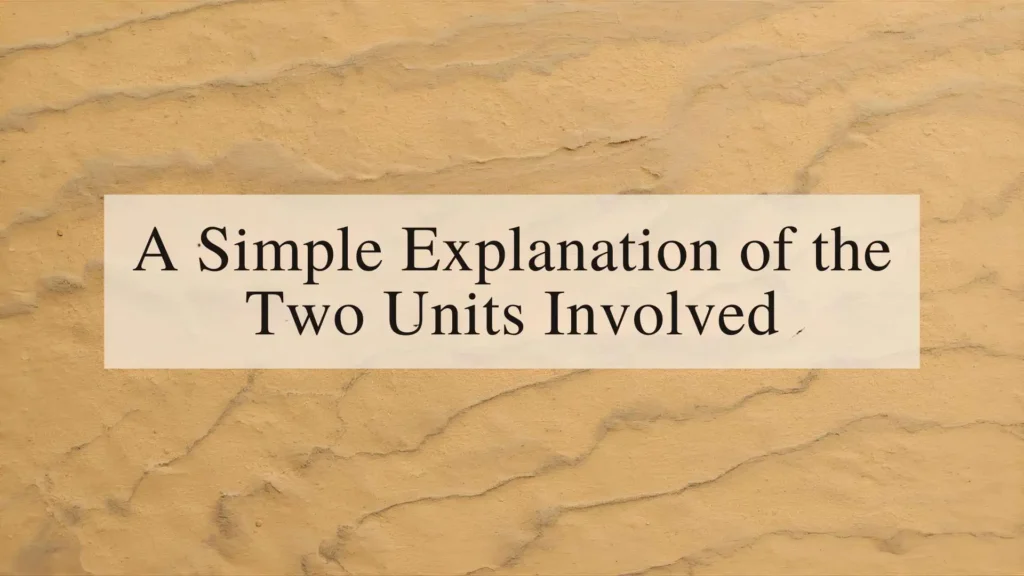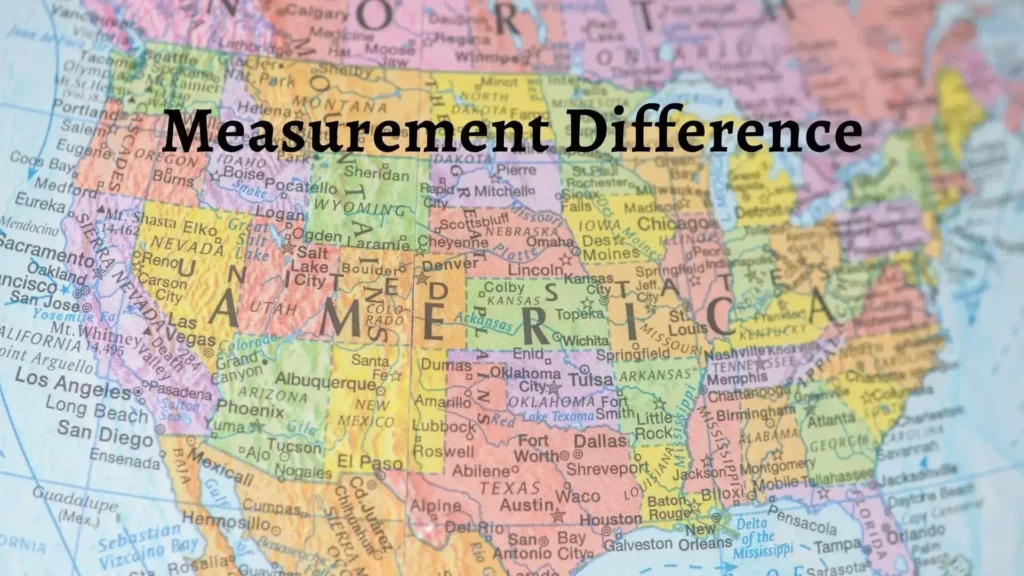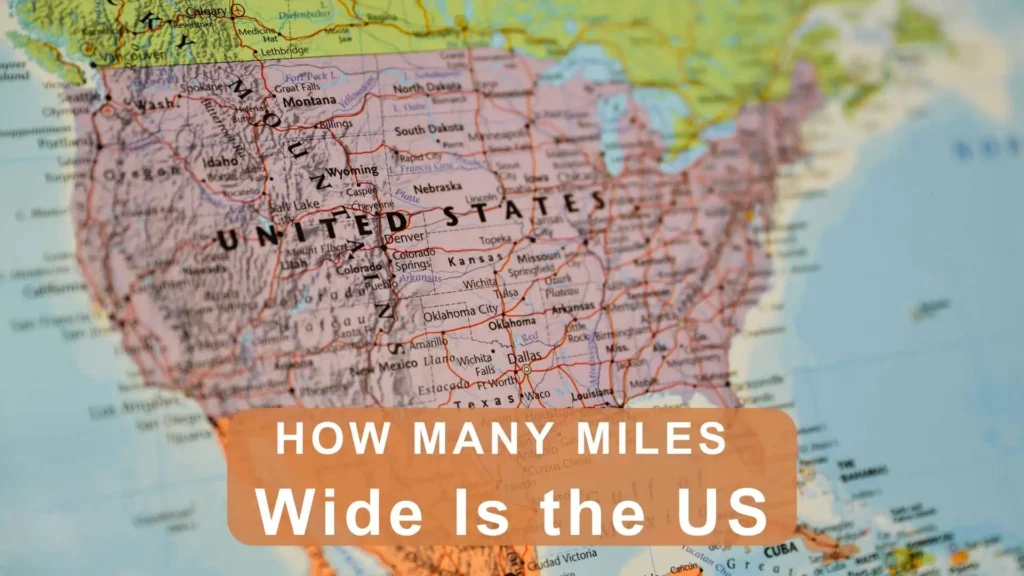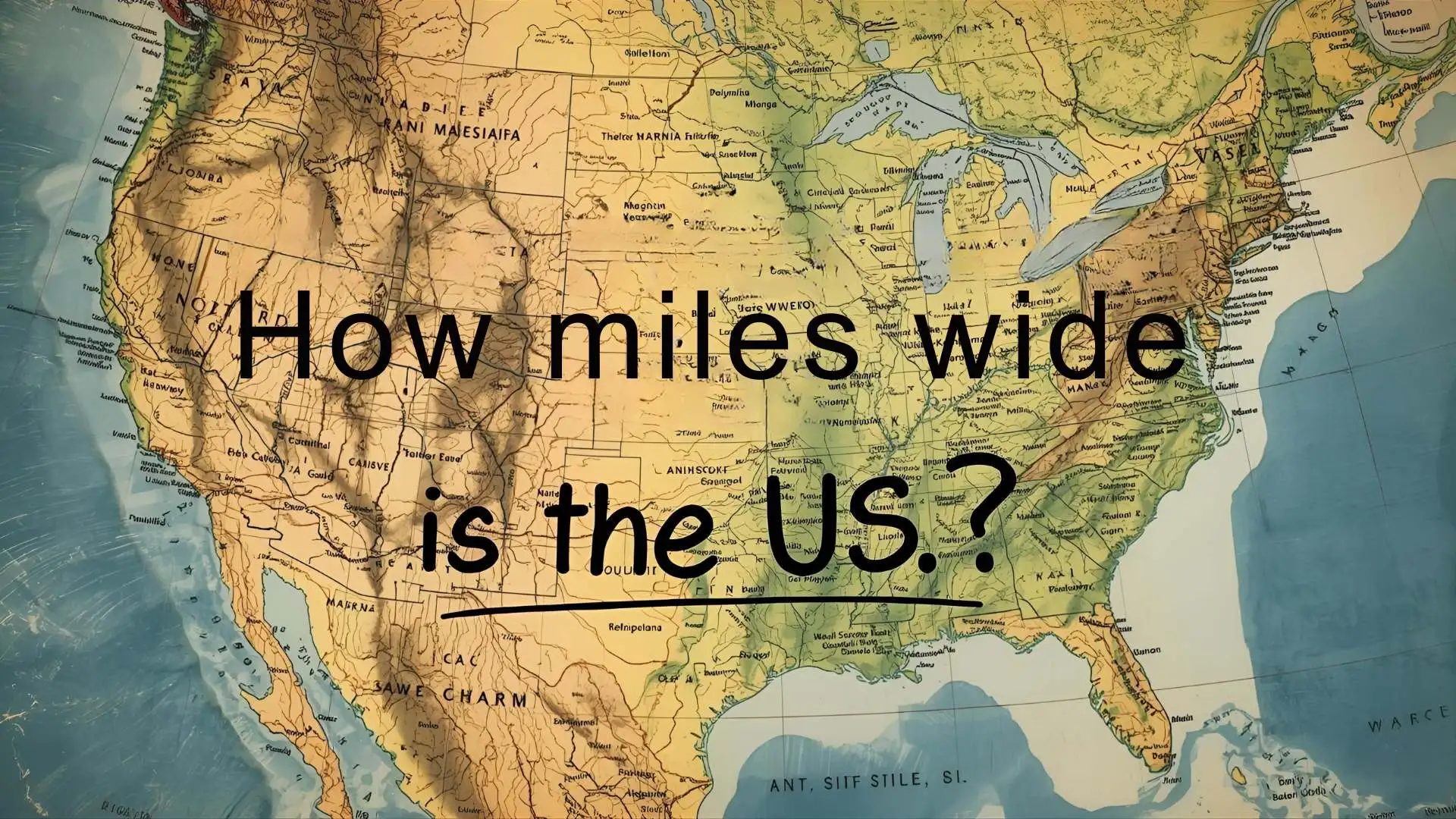If you’ve ever wondered “how many miles wide is the US?”, you’re not alone.
Just like we compare tablespoons to cups in cooking or grams to ounces in baking, comparing the width of a country helps put its scale into perspective.
Whether you’re a traveler, student, teacher, or simply curious, knowing how wide the United States is can make geography feel a little more real and measurable.
In this guide, we’ll break down the numbers in a clear, easy-to-read style.
We’ll also give you charts, real-life examples, and even some memory tricks to help you understand and remember the answer—without needing a geography degree.
A Simple Explanation of the Two Units Involved

Before answering, let’s clarify the terms:
- Miles: A unit of distance commonly used in the United States and the UK. One mile equals 5,280 feet, or about 1.6 kilometers.
- Width of the US: When we talk about width, we mean the horizontal measurement from the Atlantic Ocean (East Coast) to the Pacific Ocean (West Coast).
Think of it as stretching a measuring tape across the country, just like measuring flour in a cup, but on a much larger scale!
The Direct Answer | How Many Miles Wide Is the US?
The continental United States is approximately:
- 2,800 miles (4,500 km) wide from the Atlantic Ocean to the Pacific Ocean.
This measurement varies slightly depending on where you measure (northern vs. southern routes), but 2,800 miles is the generally accepted average width.
Conversion Chart for Easy Understanding
Here’s a quick reference table to put the US width into perspective:
| Measurement | Equivalent |
| Miles | ~2,800 miles |
| Kilometers | ~4,500 km |
| Hours by car (non-stop, average speed 60 mph) | ~46–48 hours |
| Hours by plane (non-stop, coast to coast) | ~5–6 hours |
| Times the length of the UK | ~7x |
| Times the length of Italy | ~9x |
Why This Conversion Matters in Real Life
You might wonder, “Why does it matter how many miles wide the US is?” Here are a few practical reasons:
- Travel planning: Understanding coast-to-coast distances helps you plan road trips or flights.
- Education: Great for teachers explaining geography in classrooms.
- Comparison: Helps put the US in perspective compared to other countries.
- Business & logistics: Shipping and trucking industries rely heavily on distance measurements.
How to Easily Remember the Conversion

Here are a couple of simple memory tricks:
- “28 = Coast-to-Coast” → Remember that the US is about 2,800 miles wide.
- Think of a road trip across 10 countries in Europe—that’s about the same as driving across the US.
- Or, imagine flying for 5–6 hours non-stop: that’s roughly coast-to-coast.
Common Mistakes and Tips for Accurate Measuring
- Confusing width and length: The US is taller (north to south) in some areas, but the width is the coast-to-coast measure.
- Forgetting Alaska and Hawaii: The continental US is what’s usually meant by “width.” If you include Alaska and Hawaii, the distances change significantly.
- Mixing up kilometers and miles: Always check if the measurement is in miles (US) or kilometers (rest of the world).
Measurement Difference

Depending on the exact points you measure:
- Northern Route (Maine to Washington): ~2,800 miles
- Southern Route (Florida to California): ~2,600 miles
- Straight-line “as the crow flies”: Slightly less than 2,800 miles
So while 2,800 miles is the standard, real measurements can vary by a few hundred miles.
Real Life Examples Where This Conversion Is Needed
- Planning a coast-to-coast road trip across the United States.
- Teaching kids about world geography and comparisons with other countries.
- Calculating flight times or fuel needs for cross-country travel.
- Businesses estimating shipping times from New York to Los Angeles.
FAQ | How Many Miles Wide Is the US?

Q1: How many miles wide is the US at its widest point?
The US is about 2,800 miles wide coast-to-coast.
Q2: How many kilometers wide is the US?
Approximately 4,500 kilometers.
Q3: How long does it take to drive across the US?
About 46–48 hours non-stop, or 7–10 days at a comfortable travel pace.
Q4: How long is the US from north to south?
It’s about 1,650 miles (2,660 km) from the Canadian border to Mexico.
Q5: Is Alaska included in the width measurement?
No, usually continental US measurements are used. Including Alaska increases distances significantly.
Q6: How many hours is a coast-to-coast flight in the US?
Roughly 5–6 hours, depending on the route and weather.
Conclusion
The United States is about 2,800 miles wide, a fact that helps travelers, students, and anyone curious about geography better understand its massive size. Whether you’re comparing it to Europe, planning a road trip, or just satisfying your curiosity, remembering “28 = Coast-to-Coast” is a handy trick.
So the next time someone asks you, “how many miles wide is the US?”, you’ll have a clear and confident answer.

Thomas Gray is a seasoned writer and researcher with a passion for uncovering the layers of language, culture, and human expression. With years of experience in content creation and linguistic exploration, he brings clarity and depth to complex subjects, making them accessible and engaging for readers worldwide. His work often blends academic rigor with a storyteller’s voice, earning him recognition in both digital and print publishing circles.
Thomas has contributed extensively to educational platforms, language-focused blogs, and international publications. His keen eye for detail and commitment to accuracy make him a trusted voice in the fields of linguistics, history, and cultural studies.
He is the author of several professional works, including “The Language Atlas“, “Global Words: A Linguistic Journey Across Cultures“, and “Meaning in Translation: Bridging Words and Worlds.”




